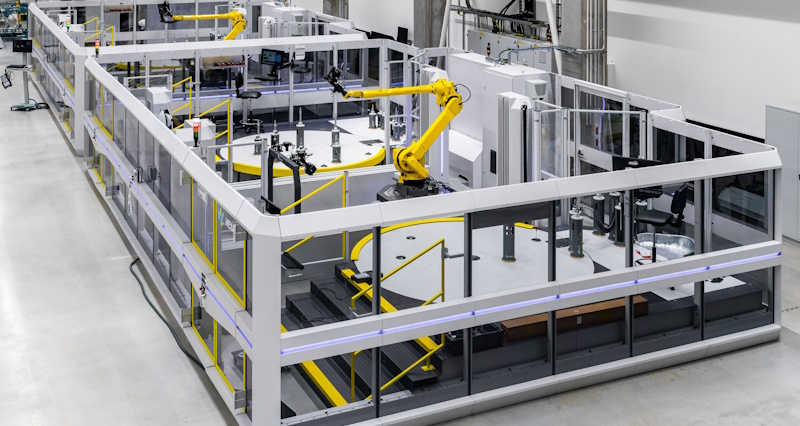Seventy-three percent of respondents stated that they had a product recall in the last five years and 48% said they have experienced more recalls than they did five years ago Quality management is one of those topics that gets more interesting the more you learn about it.
You may not realise it but if you pick up a newspaper or scroll through an online media outlet on any given day you’re guaranteed to find stories related to quality assurance and quality control. It’s just in popular culture that we don’t often use those precise terms. Instead, it’s things like this:
“Faulty car parts cause massive recall for auto manufacturer”
“Local start-up makes waves with exceptional product performance”
“Company CEO in legal trouble over safety lapse”
Consider a world without quality management. For one thing, we’d all be late for work because our alarm clocks wouldn’t be reliable. What if your belt and braces failed during a trip to the supermarket?
Joking aside, imagine putting your family in a car where quality was just a secondary concern, travelling on a boat or an aeroplane, taking medication or having surgery. A world without quality rapidly becomes a nightmare scenario.
The difference between Quality Control and Quality Assurance
According to the ASQ (American Society for Quality):
“Quality assurance is focused on providing confidence that quality requirements will be fulfilled or all the planned and systematic activities implemented within the quality system that can be demonstrated to provide confidence that a product or service will fulfill requirements for quality…
“Quality control is focused on checking those quality requirements have been fulfilled. While quality assurance relates to how a process is performed or how a product is made, quality control is more the inspection aspect of quality management…”
Quality control is about inspecting products and processes. It’s a function that aims to find and correct defects through testing and inspection throughout the production process. Quality assurance begins before production has even taken place. It’s about proactively ensuring quality specifications are met. For a more detailed explanation, read this blog Quality Assurance vs Quality Control.
The Importance of Quality Assurance (QA)
In a world without quality assurance or quality control (QA / QC), what would happen if one organisation decided to buck the trend?
They would very quickly develop a reputation for producing consistently high-quality products or services. This firm would have to spend less on sales and marketing yet have a higher market share. They would have better customer loyalty. They would attract the best employees. Other companies would be fighting to do business with them. Simply put, this organisation would have an enormous competitive advantage.
Quality assurance is important because it’s a way of preventing problems before they happen. It saves you time and money in the long term. Quality control is like an insurance policy that makes sure faulty or defective products don’t leave the factory, but quality assurance aims to prevent those defects in the first place.

Methods for Quality Assurance
Over the years there have been many attempts to ensure consistent product quality and the history of quality assurance is a long and interesting topic.
Fascinatingly, one of the earliest attempts to ensure certain standards of production is still with us today – the guilds. These are trade bodies that offer services to their members setting and maintaining standards for membership, many of which have long histories. In Europe, some of these organisations date back to the medieval period.
While the tradition of ensuring quality through membership of guilds is an interesting aspect of history, methodologies for Quality Assurance have evolved.
Instead of relying on human judgment and craftsmanship, modern manufacturers have a toolbox of sophisticated methods to maintain and improve product quality. Here are three of the most common ones, but there are many more.
Statistical Process Control
Statistical process control is a method that uses mathematical techniques to monitor, control and improve production quality.
By collecting data at various points throughout the manufacturing process, or beyond into the wider company value chain, manufacturers can identify variations or anomalies in a process that may impact the quality.
This allows for a quick, even proactive, response reducing waste and rework, enhancing quality and ensuring a more efficient process. Statistical process control helps to ensure that the process behaves predictably to produce as much conforming product as possible.
Failure Mode and Effects Analysis (FMEA)
FMEA, sometimes FMECA (failure mode, effects and critical analysis) is a more comprehensive and proactive approach to quality management.
It is a step-by-step approach to identifying all the ways a product, a design or a process might fail. This process is about identifying weaknesses and developing backup plans in advance.
Manufacturers must review every element of a product design, the value chain supporting that product and its production process to identify how and where things might go wrong.
For each potential failure, you assess the risk and take appropriate preventive actions based on that risk. Rather than fixing problems after they’ve happened, the FMEA approach is about predicting them and making sure the problem doesn’t happen in the first place. This method is widespread in industries like automotive, aerospace, and medical devices, where the impact of failures can be severe. You might find you have a large number of potential failures (some more likely than others), so this approach allows you to allocate scarce resources to the highest risk areas.
Six Sigma approach to quality assurance
A third approach to quality assurance is known as Six Sigma. This is another data-driven methodology for eliminating defects in a process. The Six Sigma approach is methodical approach to quality assurance developed by Bill Smith in 1986 while he was working for Motorola.
The central idea behind Six Sigma is that if you can measure how many defects you have in a process, you can systematically eliminate them and get as close to zero defects as possible. In practice, this usually translates to 3.4 defects per million.
It consists of two branches or sub-methodologies. DMAIC (Define, measure, analyse, improve and control) is for improving existing products or processes, and DMADV (Define, measure, analyse, design and verify) for creating new processes or products.
Common quality assurance metrics
| Cost of Quality (CoQ) | The costs associated with preventing, finding and correcting substandard products. It includes both prevention costs (like costs for quality improvement projects) and failure costs (like scrap, rework, and warranty claims) |
| Cost of Poor Quality (CoPQ) | The costs of not maintaining quality standards. These costs can be internal failures (like scrap, waste or rework) prior to the product reaching customers, and external failures (like returns, warranty claims or loss of customer goodwill) occurring after customers have received the product. COPQ has many hidden costs as well, such as the time it takes to process warranty claims, inventory carrying costs to ensure you have enough raw material and subcomponents to meet production volumes, etc. |
| Customer complaints and returns | The frequency of complaints and/or returns from customers due to faulty products or poor service. |
| Defects | The number of faulty products produced during a specific time period |
| On-time delivery | This metric shows the number of times an item is delivered to a customer as scheduled (expressed as a percentage) |
| Overall equipment effectiveness (OEE) | Calculated by multiplying three other QA metrics: (1) The availability of a machine (the opposite of downtime), (2) The performance speed compared to its theoretical maximum, and (3) the total number of units produced that meet quality standards |
| Equipment downtime | The amount of time a machine or piece of equipment is not available for use (expressed as a percentage) |
| Scrap rate | The amount of material intended for production that becomes scrap (expressed as a percentage) |
Continuous improvement in quality assurance
We’ve looked at the importance of quality assurance in an organisation, we’ve looked at key methods of quality assurance and some of the associated metrics.
Another important aspect to discuss is the idea that quality assurance is an ongoing process of continuous improvement.
Every process, product or service can aways be improved especially as new technologies and tools become available. To achieve this, organisations must continually monitor and analyse quality metrics. Artificial intelligence will increasingly play a role here. The speed and accuracy of data processing enables predictive quality management which will go beyond all the previous approaches.
Implementing lightning-fast feedback loops for process improvement is a critical aspect of this journey. AI can rapidly analyse vast data sets, spot areas of concern and suggest improvements. This approach minimises downtime, boosts efficiency, and allows manufacturers to get ahead of potential quality issues before they become serious problems.
Quality management software
The latest quality management software has become a game changer. Quality Management Systems (QMS) are software platforms that provide a framework for combining processes, procedures, responsibilities and performance metrics to guide organisations towards the achievement of their quality goals.
ETQ Reliance is the most agile, cloud-based quality management system available. It offers high level connectivity linking data across all applications. It also allows multidirectional data exchange across the value chain and beyond with seamless integration to external enterprise systems and secure workflows.
In fact, it offers more than 40 different applications covering every aspect of the business and it’s available on any device from any location because it’s cloud native. Data can be collected by shopfloor systems and then integrate with the QMS automatically triggering the preventive workflow.
Quality management systems like ETQ Reliance help to do much more than maintain standards; they are the driving force for continuous improvement within an organisation and can deliver a measurable business advantage to companies that put quality at the center of their product lifecycle.
Quality assurance is an area of manufacturing that extends beyond catching mistakes in production. It’s a cornerstone of successful manufacturing industries and like every other part of the sector, it’s being revolutionised by the digital transformation.









